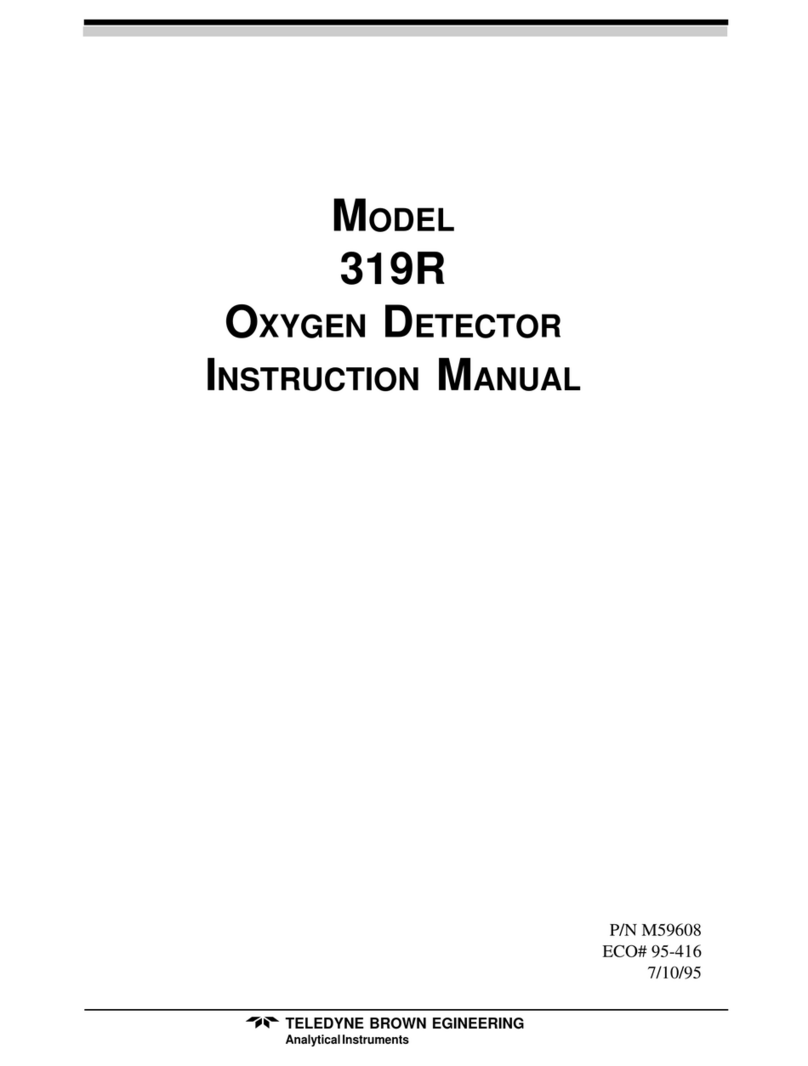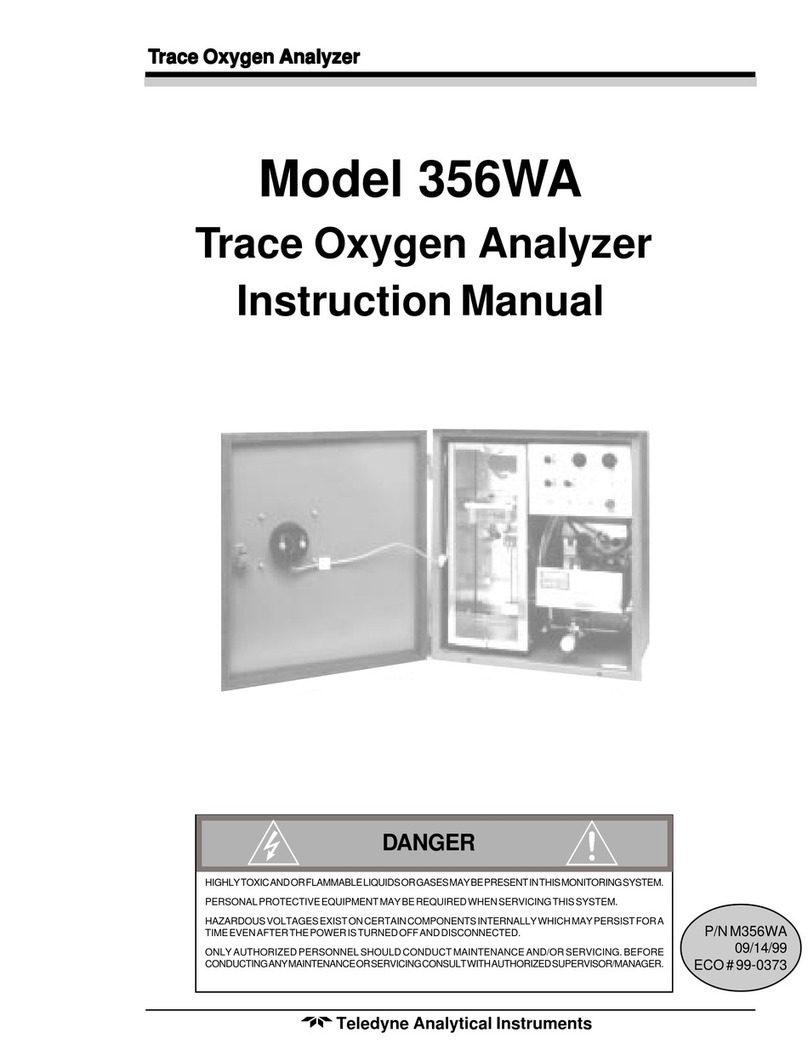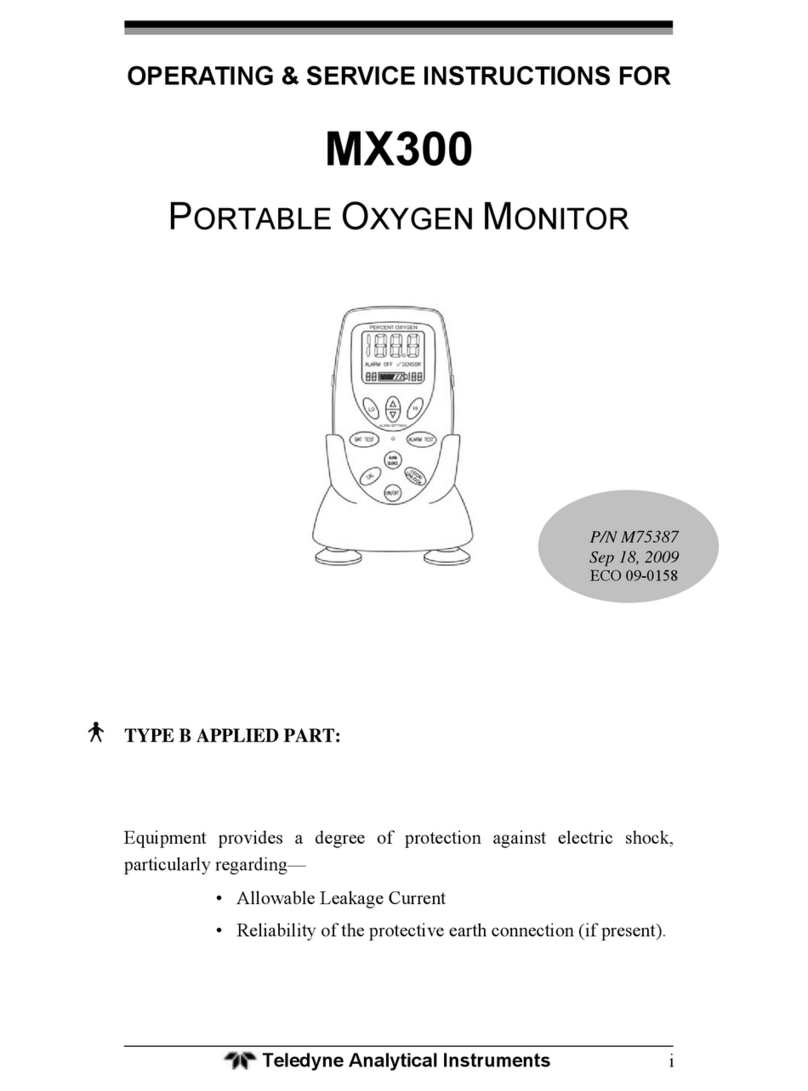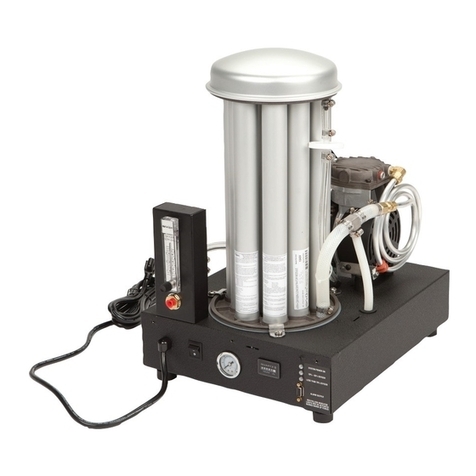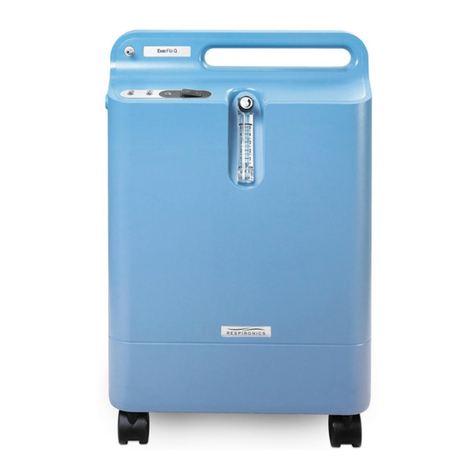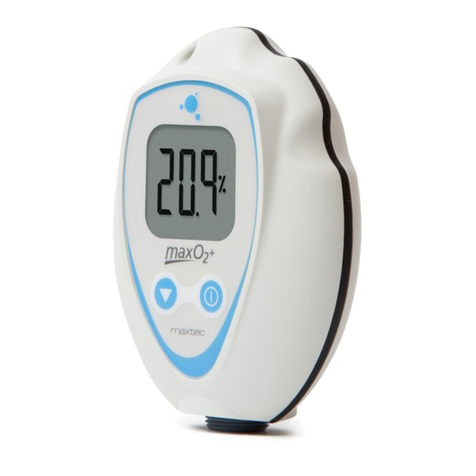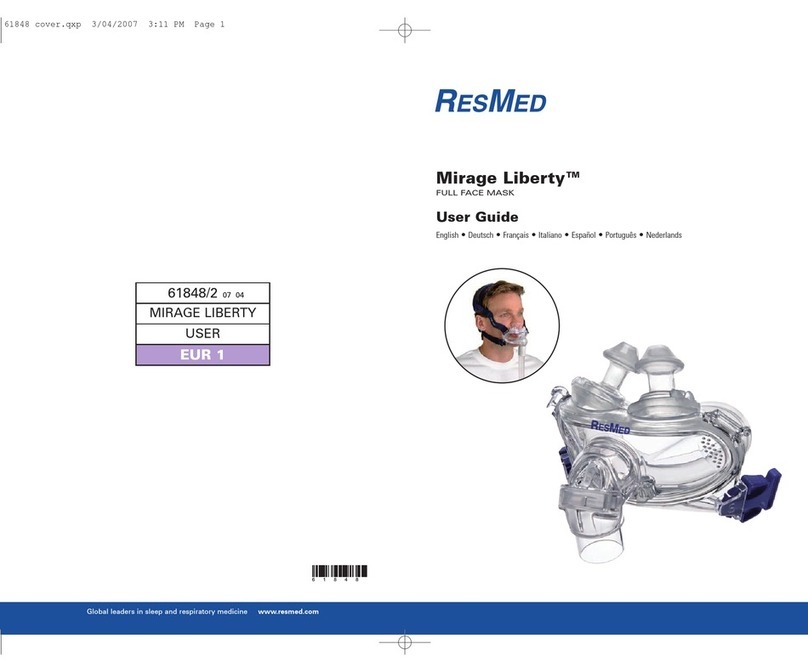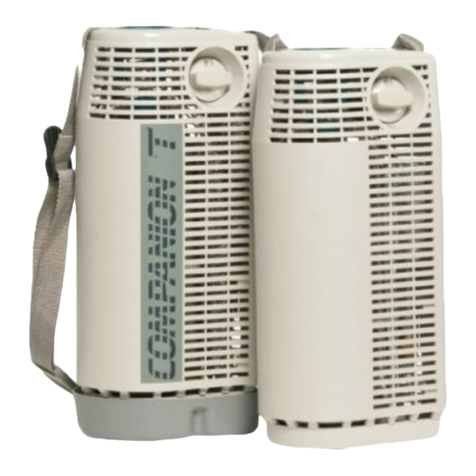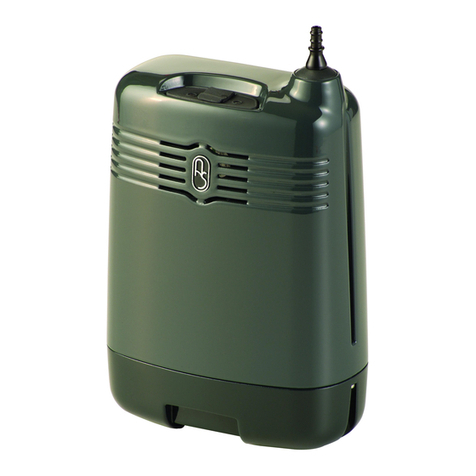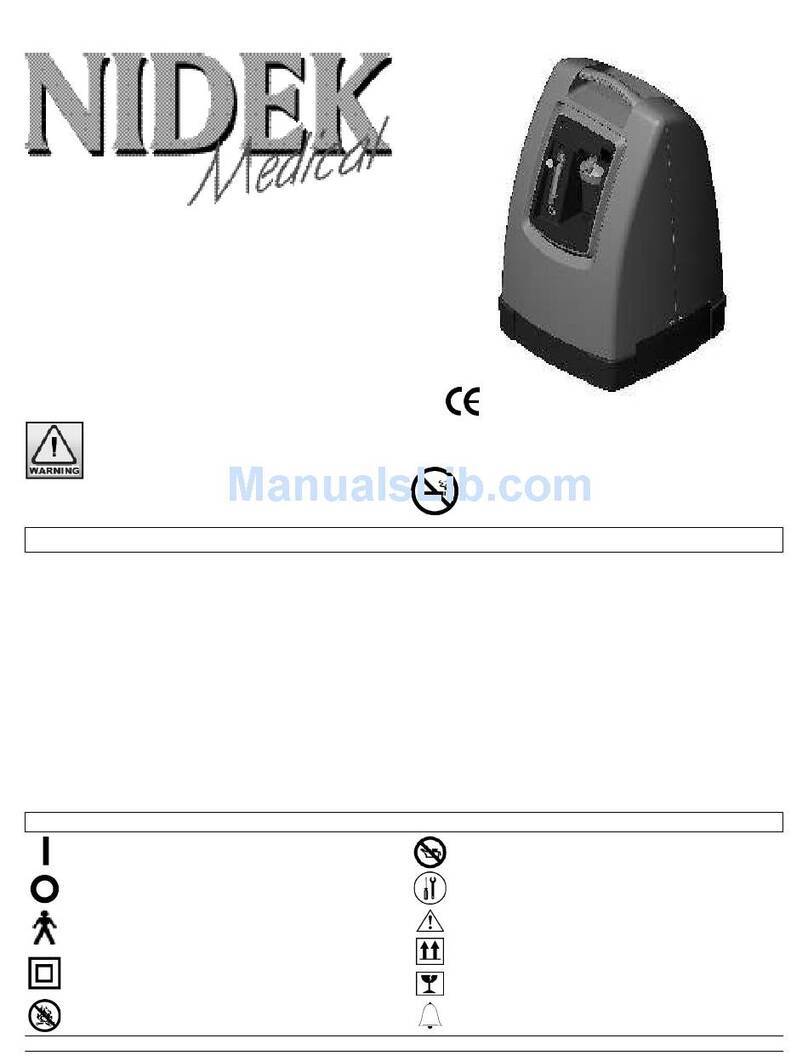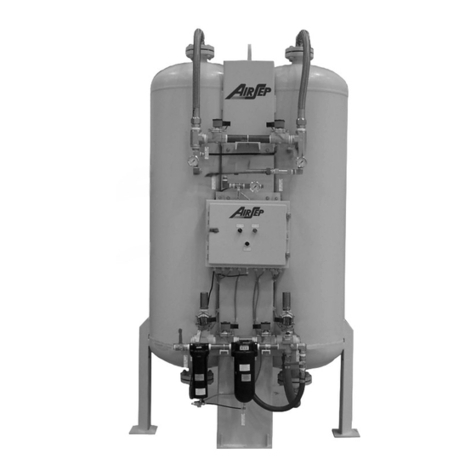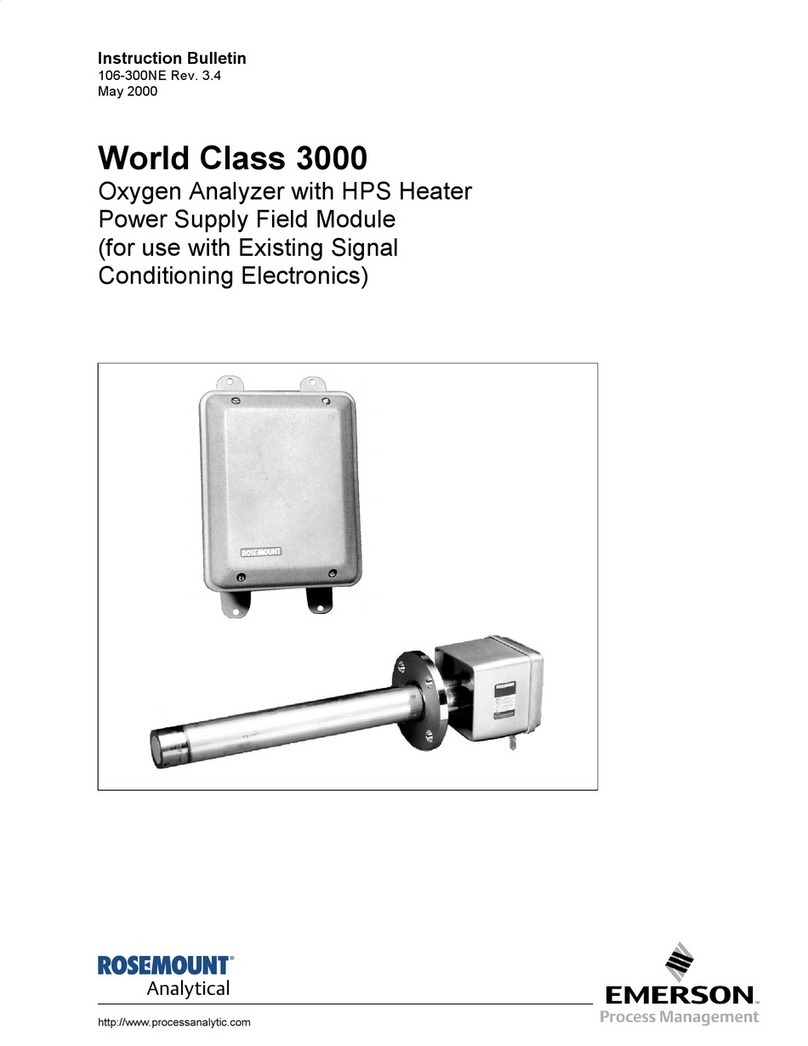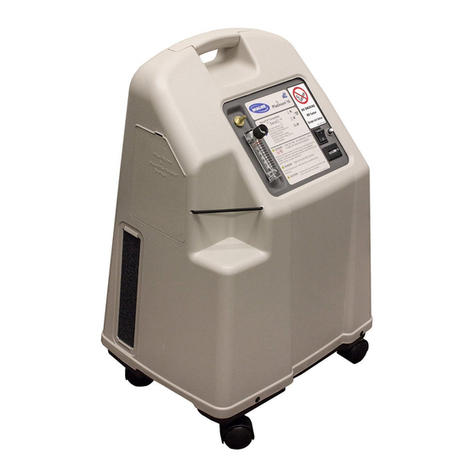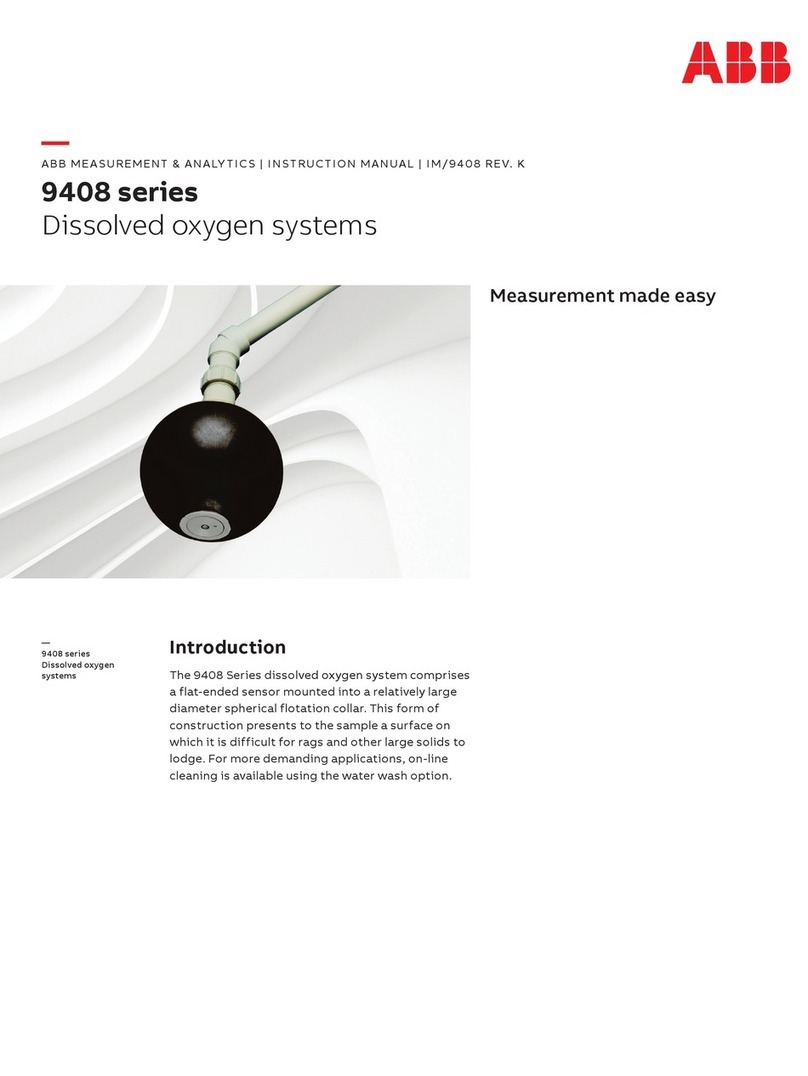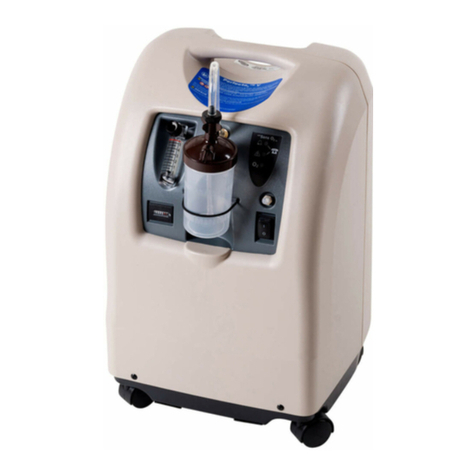
Introduction MX300-I
Teledyne Analytical Instruments 2
A sensor failure alarm is incorporated which warns the user if the
sensor signal is lost or low. When this occurs, the √SENSOR display
and a visual green light will flash, and the alarm buzzer will activate.
This alarm condition is also triggered when the oxygen concentration at
the point of analysis falls below 18% (Reference: ISO 7767 standard).
For safety reasons, when any of the above referenced conditions occur,
the alarm buzzer cannot be silenced until the alarm condition is resolved.
CAUTION: DURING NORMAL USE, ALARM CONDITIONS SHOULD
NOT BE OVERRIDDEN BY ACTIONS SUCH AS HOLDING
THE ALARM SILENCE () KEY DEPRESSED OR REMOV-
ING THE BATTERIES. THE CAUSE FOR THE ALARM
CONDITION SHOULD FIRST BE RESOLVED.
CAUTION: WHILE HOLDING DOWN THE ALARM SILENCE () KEY
MAY MOMENTARILY SILENCE THE ALARM BUZZER ACTI-
VATED BECAUSE OF REASONS MENTIOEND ABOVE,
AUDIBLE ALARM WILL RETURN UPON DISENGAGING THE
ALARM SILENCE () KEY. HOLDING THE KEY FOR
LONGER DURATIONS WILL INITIATE THE “STUCK KEY”
ALARM, WHICH CAN BE DEACTIVATED ONLY VIA REMOV-
ING THE BATTERIES FROM THE ANALYZER. ANALYZER
SHOULD BE RECALIBRATED UP ON REPOWERING. .
The MX300-I Monitor incorporates a dual concentration alarm with
individual user-defined set points. The set points are displayed on the
lower portion of the LCD display with the low alarm set point appearing
at the lower left and the high alarm appearing on the lower right of the
display. The alarm circuit provides both an audible and a visual alarm.
When the oxygen concentration reaches levels beyond the pre-set
alarm limits, the following will occur:
1. If the HI alarm is triggered because of monitored oxygen level
exceeding the high alarm set point, the green light display will
flash and the alarm buzzer will activate. The alarm buzzer can
be silenced by pressing the Alarm Silence () key.
NOTE: IF THE ALARM CONDITION IS NOT CORRECTED WITHIN
ABOUT 115 SECONDS, THE ALARM BUZZER WILL REAC-
TIVATE. PRESSING THE ALARM SILENCE () KEY
AGAIN WILL SILENCE THE ALARM BUZZER ONCE AGAIN
FOR ABOUT 115 SECONDS, WITH THE BUZZER REAAC-
TIVATING IF THE ALARM CONDITIONS PERSIST.
2. If the LO alarm is triggered because of monitored oxygen level
falling below the low alarm set point, the green light display will
flash and the alarm buzzer will activate.


